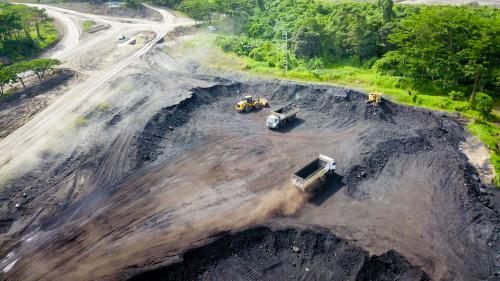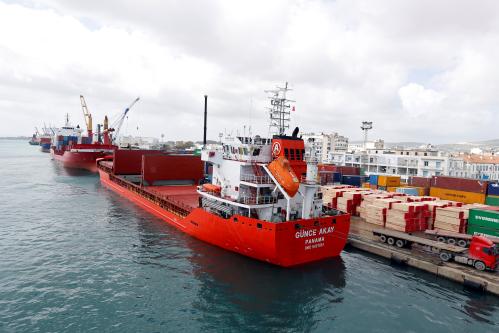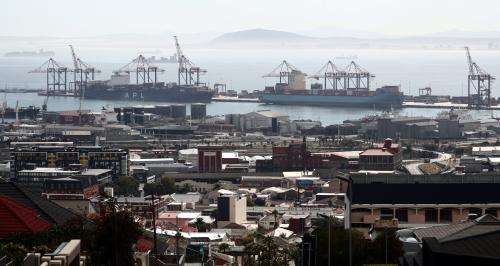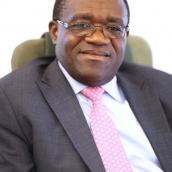The benefits of electricity trade among countries cannot be overemphasized. Regional electricity trade allows utilities and market participants to take advantage of economies of scale, which enables the development of large-capacity plants and access to efficient low-cost supply options. It provides more flexibility in accessing generation capacity from other countries in the region and an opportunity for countries to meet their capacity and energy reserve requirements at lower cost. The pooling of resources provides security benefits stemming from the diversity of both supply and demand derived from integrating power systems across the region. Environmental benefits come from the ability of integrated electricity systems to use a higher share of renewable energy resources and rely less on liquid fuel generation.
Recognizing these benefits, the Arab Ministerial Councils for Electricity (AMCE), under the League of Arab States (LAS) umbrella, has made establishing a Pan-Arab Electricity Market (PAEM) a priority. Working with the World Bank, the LAS and Arab countries have made a strong economic case for greater integration among the power systems in the region, underpinned by establishing and operating the PAEM. The agreements of the PAEM are designed to become legally binding to any Arab country that signs them—by facilitating electricity trade transactions.
The AMCE approved the ratification process of the PAEM legal and market agreements in the summer of 2020, which sets the path for Arab countries to finalize their internal procedures in preparation for signing the agreements in 2021. While this marks an important milestone in the process of establishing the PAEM, its effective operationalization will be a long and complex process that requires greater commitment and support from participating governments. Past Pan-Arab regional integration agreements may have failed to gain the needed traction among governments, but the momentum establishing the PAEM now is different and unique for many reasons. The imbalanced energy resources across the region, the energy transition agenda, the unique position of countries in the Middle East and North Africa (MENA) to exploit solar power, the rapid cost decline of renewable energy technologies, as well as the exponential growth of renewable energy technologies, mean governments in the region would benefit greatly by optimizing their cleaner energy resources and diversity of demand patterns when operating the PAEM. The PAEM enables countries to integrate their national grids and therefore commit to commercial cross-border electricity trade.
The impact of the COVID-19 pandemic, as well as the need to limit the region’s vulnerability to global oil price volatilities, has added a new sense of urgency and a renewed political commitment to rethinking regional supply chains and integration. The rapid population growth in MENA, coupled with an industrial and economic recovery following the pandemic, means the demand for power will continue to increase—making availability of reliable electricity supply a pressing priority for Arab countries going forward. The fiscal constraint imposed by COVID-19 and the criticality of the power sector to economic revival following the pandemic emphasizes the importance of the PAEM for all participating countries in both the short and the long term. Active commercial trade through the PAEM would bring significant value to the treasuries, utilities, and citizens of the region.
The region is already highly interconnected with the Gulf Cooperation Council (GCC) subregion being the most integrated compared with the Mashreq’s eight-country interconnection and Maghreb subregions. Nevertheless, only 2 percent of electricity produced in the MENA region is traded in a year. The PAEM would help integrate these existing cooperation efforts and increase the utilization of the existing cross-border transmission infrastructure by introducing new pricing mechanisms to unlock commercial bilateral electricity trade and pave the way for a greater number of market participants. The PAEM aims at increasing cross-border electricity trade from the current 2 percent to between 37 and 41 percent by 2035. This will equip the MENA region with one of the largest multicountry integrated systems in the world—producing a total generation capacity of over 600 gigawatts by 2035. Additionally, the size and geographical reach of the PAEM unlock opportunities for trade with electricity grids in the European Union, sub-Saharan Africa, and Asia.
Finally, establishing the PAEM deepens the commitment of the participating countries to cooperate in building trust and resolving shared concerns about security and national sovereignty. By introducing new pricing mechanisms for cross-border electricity trade, the establishment of the PAEM will further entice participating countries to reform their respective domestic electricity sectors, phase out subsidies, enable greater private sector investment, and enhance the competitiveness of their respective economies. These can help contribute to growth, job creation, and shared prosperity for MENA and beyond.








Commentary
How the Pan-Arab electricity market can promote regional cooperation and economic recovery
February 19, 2021